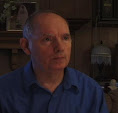By living-pterosaur researcher and author Jonathan David Whitcomb
.
How many critics have assumed that eyewitnesses of living pterosaurs must be either mistaken or dishonest! How dogmatic the teachings of universal extinctions! How long we have been indoctrinated! Why have an open mind to someone who talks about seeing a living pterosaur? It is a human experience.
I have interviewed eyewitnesses from many countries, including the United States, England, the Netherlands, Sudan, the Philippines, Papua New Guinea, Australia. Many of them describe a large flying creature with a long tail; many descriptions include words like "featherless," "head crest," "diamond at the end of the tail," "huge." These people come from different cultures, different native languages, different religious beliefs; yet about 80% or more of the sightings, in any particular part of the world, include "long tail" with a description of a strange flying creature. Consider now that long tail; what does it mean?
.
A few critics have ridiculed sighting reports as hoaxes because they have mixtures of descriptions that do not coorelate with any particular pterosaur fossil. Those critics, however, fail to take into account a number of important details. Many of the more-credible sightings (true eyewitnesses sometimes report directly to a cryptozoologist who specializes in living pterosaurs; I am one of those investigators) include the same unusual combinations: large size, long tail, head crest. Random hoaxes would not create such a consistant set of descriptions; and why should a modern pterosaur not have those characteristics? Those consistencies would not come from hoaxes; for example, in the United States, decades of movies and television have conditioned any potential hoaxer to think Pterodactyloid rather than Rhamphorhynchoid, but American eyewitnesses, like those in other countries often describe a long tail.
Misidentifications of a giant bat---that is another common criticism. But how do critics explain the long tail, often seen with a Rhamphorhynchoid flange at the end? And how do they explain the behavior of ropens at Umboi Island, Papua New Guinea? There the creature has been seen to hold itself upright on a tree trunk (not upside down like a bat), and to catch fish on the reefs, and to glow with bright bioluminescence. Some eyewitnesses of the ropen give a sure witness of a pointed head crest.
Generalized criticisms of eyewitnesses are also shot down. How can we say "crazy" when one of the eyewitnesses is a psychologist? How can we say "vision problems" when one of the eyewitnesses is a flight instructor (with many thousands of hours of flight experience)? How can we say "unscientific observers" when one of the eyewitnesses is a scientist?
Why assume that all the eyewitnesses must be wrong, as if human experience were secondary to the dogmatic proclamations of fossil experts? Living pterosaurs, not extinct pterosaurs---those are what eyewitnesses see.
.
###
Cryptozoology book on living pterosaurs in the United States (non-fiction)
.
How many critics have assumed that eyewitnesses of living pterosaurs must be either mistaken or dishonest! How dogmatic the teachings of universal extinctions! How long we have been indoctrinated! Why have an open mind to someone who talks about seeing a living pterosaur? It is a human experience.
I have interviewed eyewitnesses from many countries, including the United States, England, the Netherlands, Sudan, the Philippines, Papua New Guinea, Australia. Many of them describe a large flying creature with a long tail; many descriptions include words like "featherless," "head crest," "diamond at the end of the tail," "huge." These people come from different cultures, different native languages, different religious beliefs; yet about 80% or more of the sightings, in any particular part of the world, include "long tail" with a description of a strange flying creature. Consider now that long tail; what does it mean?
.
Sketch by eyewitness Eskin Kuhn (eastern Cuba, 1971)
.A few critics have ridiculed sighting reports as hoaxes because they have mixtures of descriptions that do not coorelate with any particular pterosaur fossil. Those critics, however, fail to take into account a number of important details. Many of the more-credible sightings (true eyewitnesses sometimes report directly to a cryptozoologist who specializes in living pterosaurs; I am one of those investigators) include the same unusual combinations: large size, long tail, head crest. Random hoaxes would not create such a consistant set of descriptions; and why should a modern pterosaur not have those characteristics? Those consistencies would not come from hoaxes; for example, in the United States, decades of movies and television have conditioned any potential hoaxer to think Pterodactyloid rather than Rhamphorhynchoid, but American eyewitnesses, like those in other countries often describe a long tail.
Misidentifications of a giant bat---that is another common criticism. But how do critics explain the long tail, often seen with a Rhamphorhynchoid flange at the end? And how do they explain the behavior of ropens at Umboi Island, Papua New Guinea? There the creature has been seen to hold itself upright on a tree trunk (not upside down like a bat), and to catch fish on the reefs, and to glow with bright bioluminescence. Some eyewitnesses of the ropen give a sure witness of a pointed head crest.
Generalized criticisms of eyewitnesses are also shot down. How can we say "crazy" when one of the eyewitnesses is a psychologist? How can we say "vision problems" when one of the eyewitnesses is a flight instructor (with many thousands of hours of flight experience)? How can we say "unscientific observers" when one of the eyewitnesses is a scientist?
Why assume that all the eyewitnesses must be wrong, as if human experience were secondary to the dogmatic proclamations of fossil experts? Living pterosaurs, not extinct pterosaurs---those are what eyewitnesses see.
.
Jonathan Whitcomb with his wife, Gladys, in Murray, Utah, USA
.###
Cryptozoology book on living pterosaurs in the United States (non-fiction)



No comments:
Post a Comment